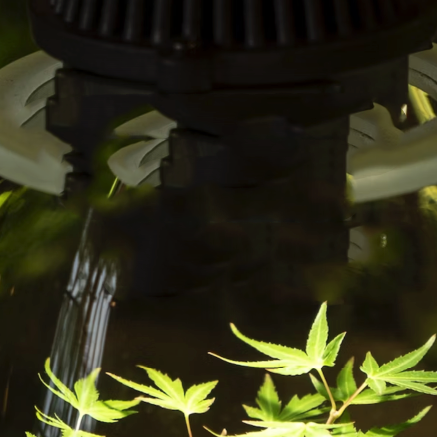How to Use VPD to Increase Your Yields
Many growers believe that the most important things in growing are the light and the nutrients.
Light and nutrients are very important, but plants can't use either of them properly unless the environment lets them.
About Transpiration
Plants need to lose some water through their leaves. This is so they can draw water (containing nutrients) in through their roots to replace it.
This process of water being lost by the leaves and replaced with nutrient rich water by the roots is called transpiration.
Plants cannot get the nutrients they need by the roots unless transpiration happens.
Why is VPD so Important?
VPD (Vapour Pressure Deficit) is a key measure of your grow room environment, combining temperature and humidity into one value. It helps you understand how well the air can dry moisture.
- High VPD: The air is warm and dry, drying things quickly. Plants may lose water too fast, leading to water shortages, wilting, and potential stress.
- Low VPD: The air is cold and humid, which slows water loss from plants. This can prevent them from absorbing enough nutrients, causing deficiencies and slower growth. It also increases the risk of mould developing in warm, humid conditions.
The goal is to maintain a balanced VPD so plants lose just enough water through their leaves to draw in nutrients from the roots.
VPD is measured in Kilopascals (kPa) or Bar (1 kPa = 10 Bar).
- Low VPD = Cold/humid air, poor water loss, risk of mould.
- High VPD = Warm/dry air, excessive water loss, risk of wilting.
Keeping VPD in the optimal range ensures healthy, balanced growth.
The Ideal VPD
The ideal VPD depends a lot on the stage of growth the plants are in:
Rooting Cuttings - These need a very low VPD as they don't have an established root system to replace water yet. A propagator holds moisture in and helps to keep VPD low.
Early Veg - The ideal VPD is between 4 - 8 Bar. The root system is still developing so keep things gentle with not too much water loss.
Late veg and Early Flowering - Ideal VPD is between 8 - 12 Bar. Now that the plants have a decent root system, increasing the VPD will increase nutrient uptake and fuel faster growth.
Mid - Late Flowering - Ideal VPD is 12 - 16 Bar. Now that plants are in peak flowering, raising the VPD a bit further will power a more productive flowering stage. The higher VPD also discourages molds to start.
Except during the cutting and young plant stages, it’s generally best to maintain VPD in the green zone on the chart above.
If you’re using an extraction system, adjusting humidity can be challenging. Humidified or dehumidified air is often quickly replaced by air from outside, which retains its original humidity level. Without a sealed room system, maintaining consistent humidity can be difficult.
Temperature, on the other hand, is usually easier to control to achieve the right VPD. You can adjust this by using a fan speed controller to increase or decrease your extraction rate.
For a more in-depth look at VPD, take a look at our full explanation in our sister blog here, entitled Vapour Pressure Deficit - Understanding how temperature and humidity affect plant growth.

